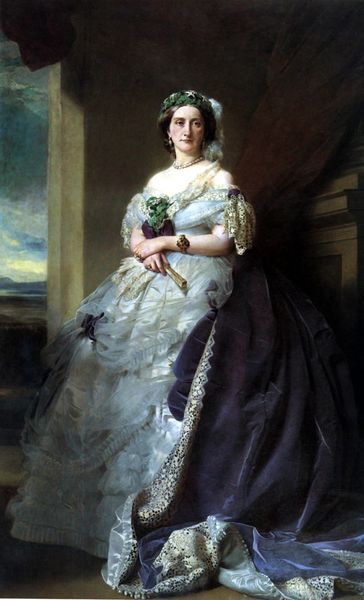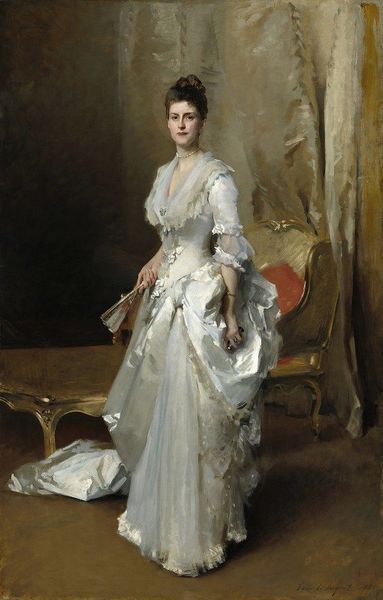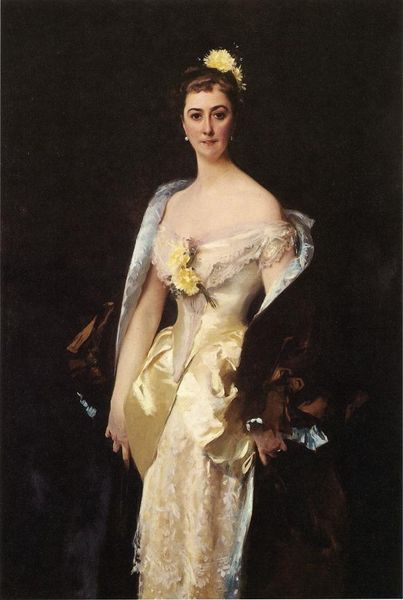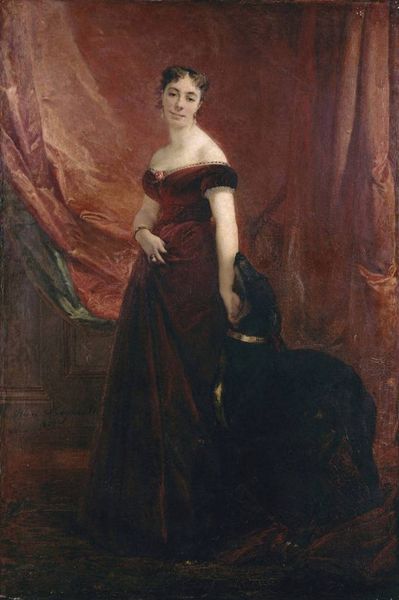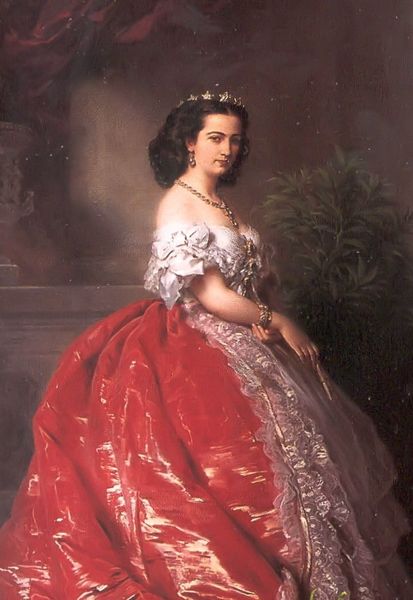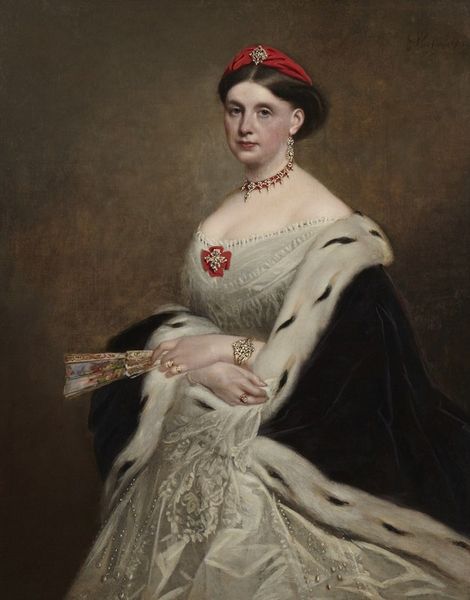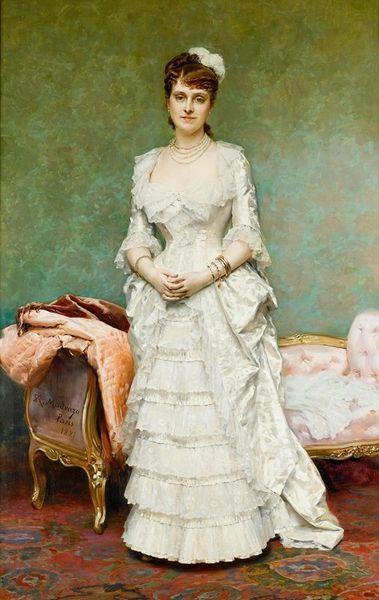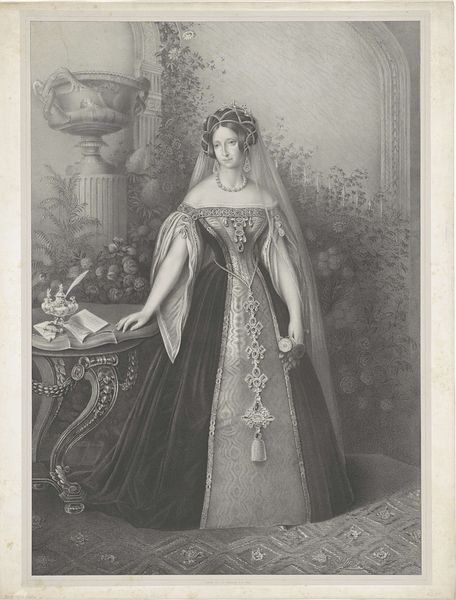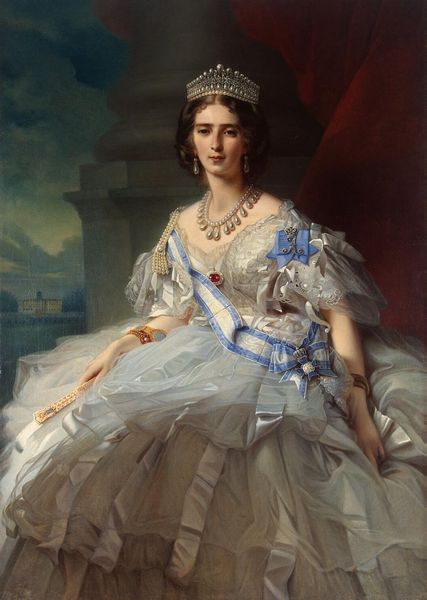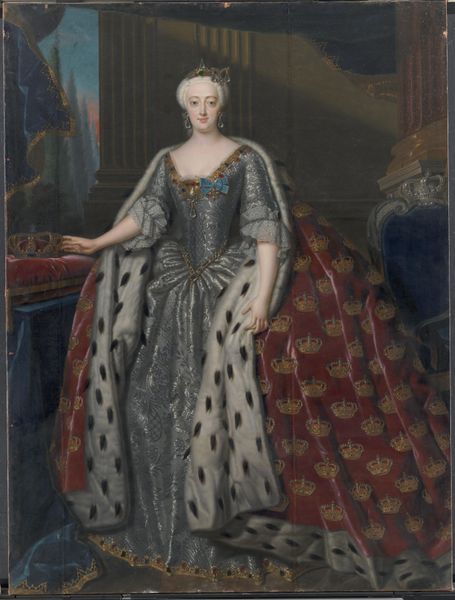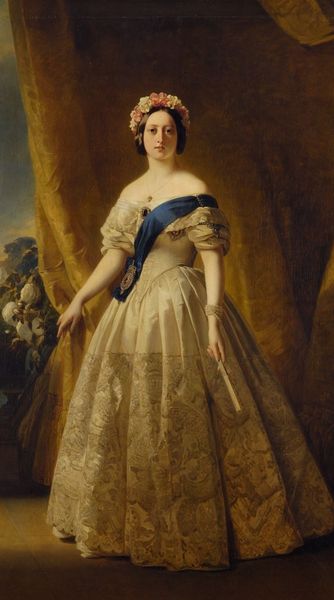
painting, oil-paint
#
portrait
#
painting
#
oil-paint
#
historical fashion
#
classicism
#
history-painting
#
academic-art
#
realism
Dimensions: height 837 mm, width 591 mm
Copyright: Rijks Museum: Open Domain
Editor: Here we have a portrait of Wilhelmina, Queen of the Netherlands, an oil painting completed sometime between 1898 and 1906. There’s something about the weight of the regalia, and her direct gaze. What do you see in this piece in terms of its historical or cultural meaning? Curator: Well, beyond the immediate impression of royalty, I consider how portraits like this functioned. It’s a visual construction of power, carefully managed to project a specific image. Consider the social context: Wilhelmina’s reign began at a time of immense social change and growing calls for democracy. A portrait like this aimed to reinforce the authority of the monarchy. Editor: So, you're saying this wasn't just about capturing her likeness, but about communicating a message to the public? Curator: Precisely. The ermine, the crown, the setting – they all contributed to a carefully curated representation. This wasn't just a picture of Wilhelmina; it was an assertion of the Dutch monarchy in the face of evolving political and social ideologies. Think of how it was displayed. Where was it seen? Who saw it? How did its audience receive that image? The politics of imagery are never neutral. Editor: That makes me think about the role of the artist, too. Was Thérèse Schwartze complicit in this, or did she perhaps bring her own perspective to the task? Curator: An interesting question! I would encourage exploring Schwartze's body of work, and writings about her process if possible. Ultimately portraits like these emerge through negotiation and institutional pressures. Thinking about Wilhelmina’s intent for the portrait and what Schwartze brought to it would lead to more perspectives. Editor: I hadn't considered how the artwork functions within a specific social and political landscape, so it's more than just what's visually there. Curator: Absolutely. Seeing art as an active agent in cultural dialogue completely changes our understanding. The historical context helps unravel its complexities. Editor: Thank you. Now I have more to consider beyond the surface when looking at historical portraits!
Comments
No comments
Be the first to comment and join the conversation on the ultimate creative platform.
